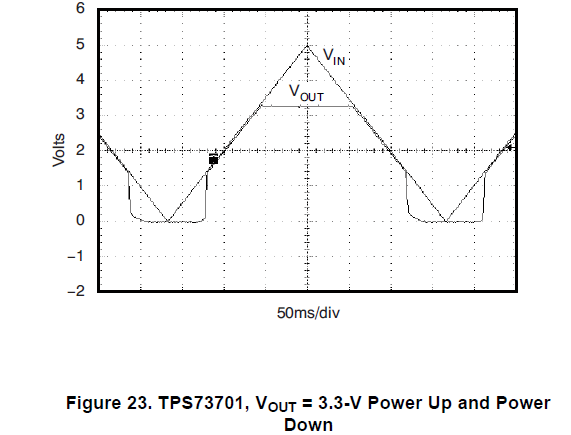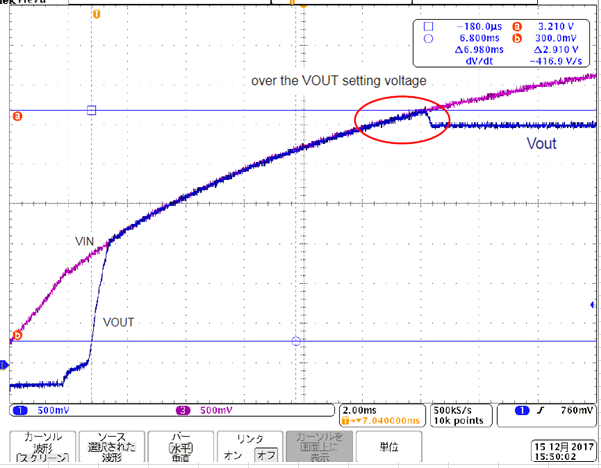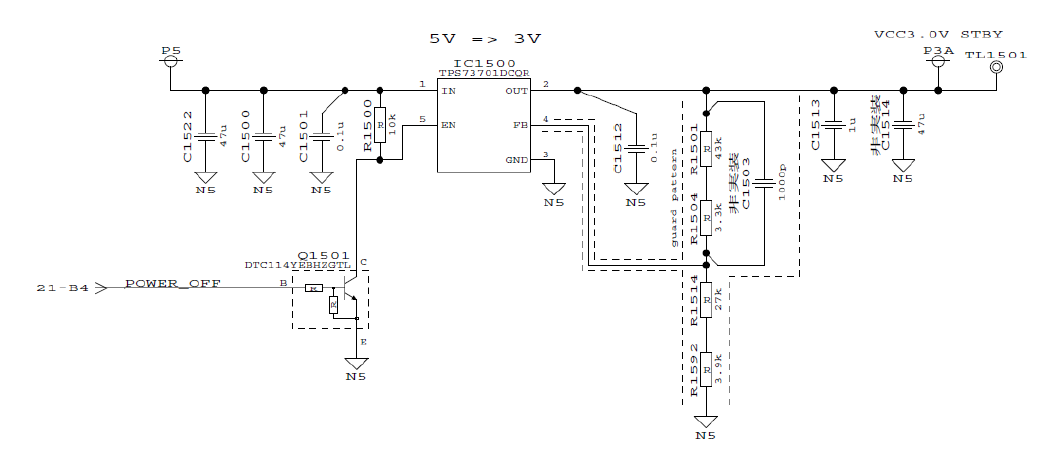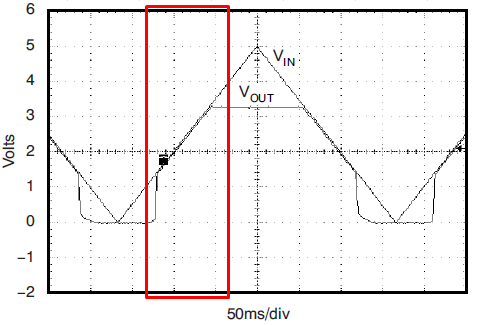My customer designs boards using TPS73701.
<Question>
Please tell me reason the following phenomena in this product occur.
※Since this behavior can not be seen from the datasheet page 11 "Figure 23", I do not know why it will occur.
<Phenomenon>
As in the following waveform, VOUT rises together with VIN and exceeds the set voltage of VOUT (for about 2 msec).
Even if the rise time of VIN is changed, the same occurs.
I need your help.
Best regards,
Pokkun







